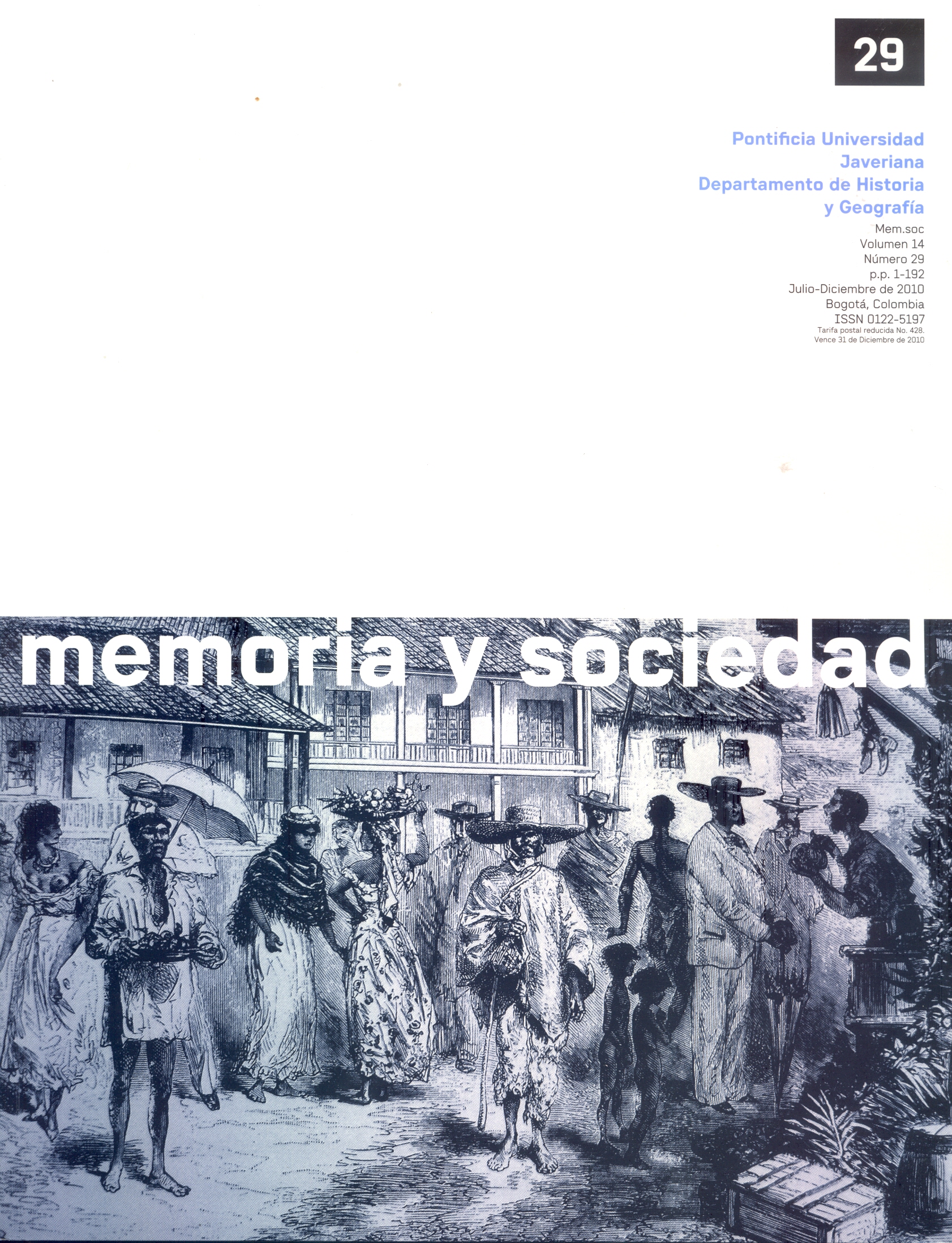Resumen
Este trabajo analiza la representación del “negro” en las iniciativas y los espacios de difusión folclórica que proliferaron entre las décadas de los cincuenta y los sesenta del siglo xx, como producto de un contexto social y político caracterizado por la necesidad de redefinir las identidades nacionales latinoamericanas. En Colombia, este proceso fue iniciado en los años treinta a través de la política educativa de la República Liberal, y articulado a partir de la noción de “nación mestiza”. Específicamente, el presente documento revisa con atención la obra y la gestión cultural desarrolladas por Delia y Manuel Zapata Olivella, dos figuras del ámbito cultural e intelectual del país, que se dieron a conocer a mediados del siglo pasado gracias a sus aportes en la comprensión del folclor y la inclusión del “negro” dentro de la memoria nacional.La revista Memoria y Sociedad se encuentra registrada bajo la licencia Creative Commons Reconocimiento 4.0 Internacional. Por lo tanto, esta obra se puede reproducir, distribuir y comunicar públicamente en formato digital, siempre que se reconozca el nombre de los autores y a la Pontificia Universidad Javeriana. Se permite citar, adaptar, transformar, autoarchivar, republicar y crear a partir del material, para cualquier finalidad (incluso comercial), siempre que se reconozca adecuadamente la autoría, se proporcione un enlace a la obra original y se indique si se han realizado cambios. La Pontificia Universidad Javeriana no retiene los derechos sobre las obras publicadas y los contenidos son responsabilidad exclusiva de los autores, quienes conservan sus derechos morales, intelectuales, de privacidad y publicidad.
El aval sobre la intervención de la obra (revisión, corrección de estilo, traducción, diagramación) y su posterior divulgación se otorga mediante una licencia de uso y no a través de una cesión de derechos, lo que representa que la revista y la Pontificia Universidad Javeriana se eximen de cualquier responsabilidad que se pueda derivar de una mala práctica ética por parte de los autores. En consecuencia de la protección brindada por la licencia de uso, la revista no se encuentra en la obligación de publicar retractaciones o modificar la información ya publicada, a no ser que la errata surja del proceso de gestión editorial. La publicación de contenidos en esta revista no representa regalías para los contribuyentes.


